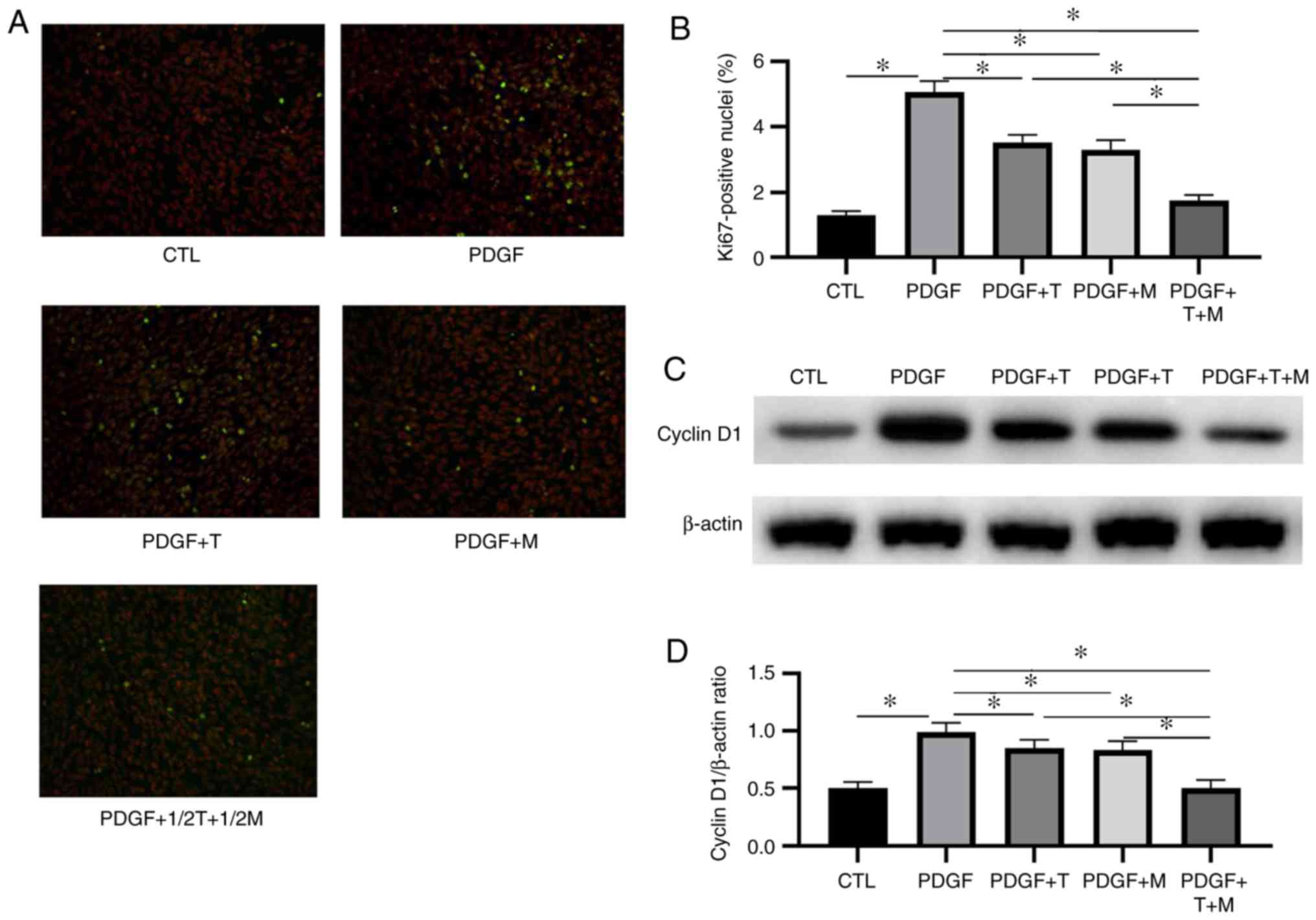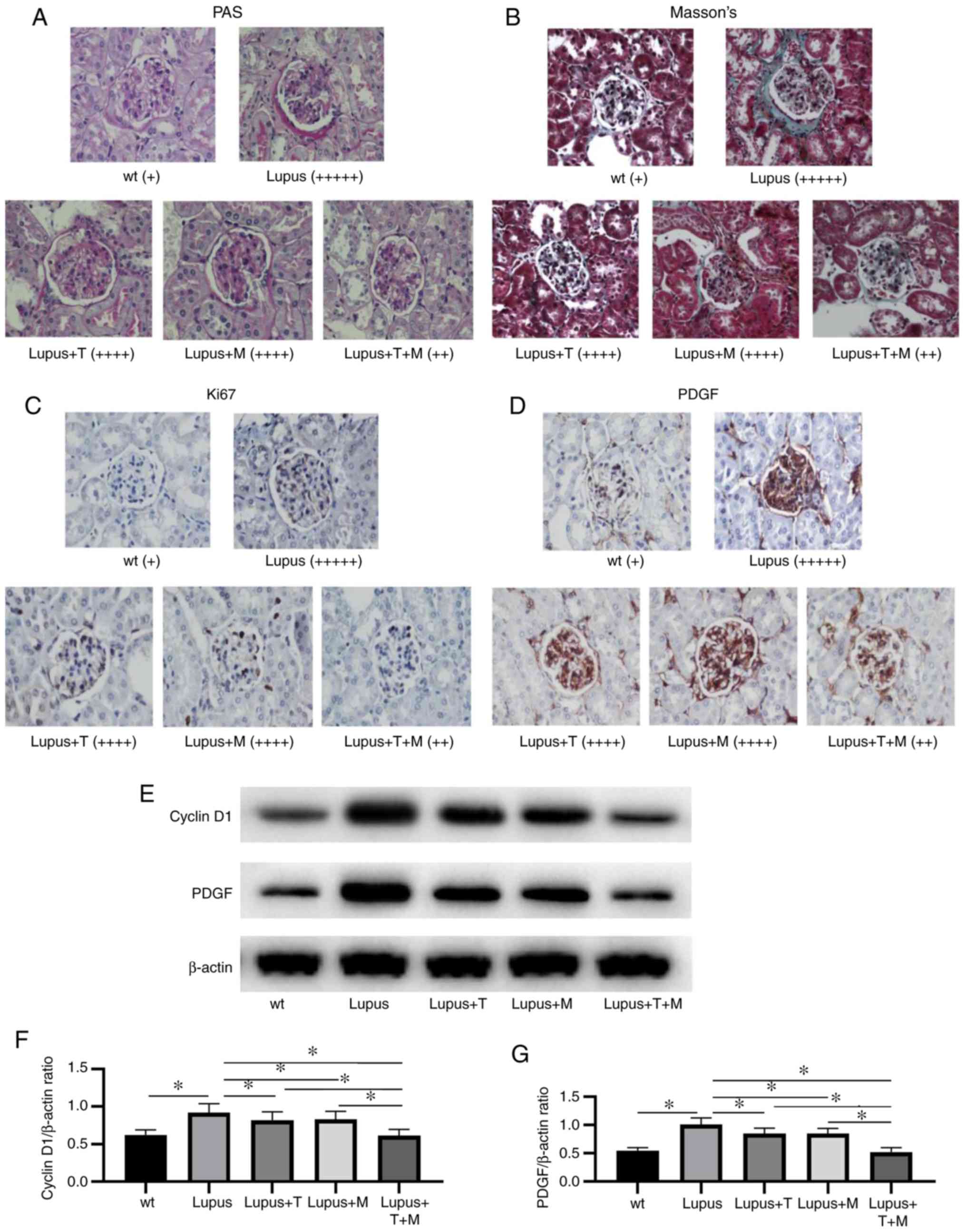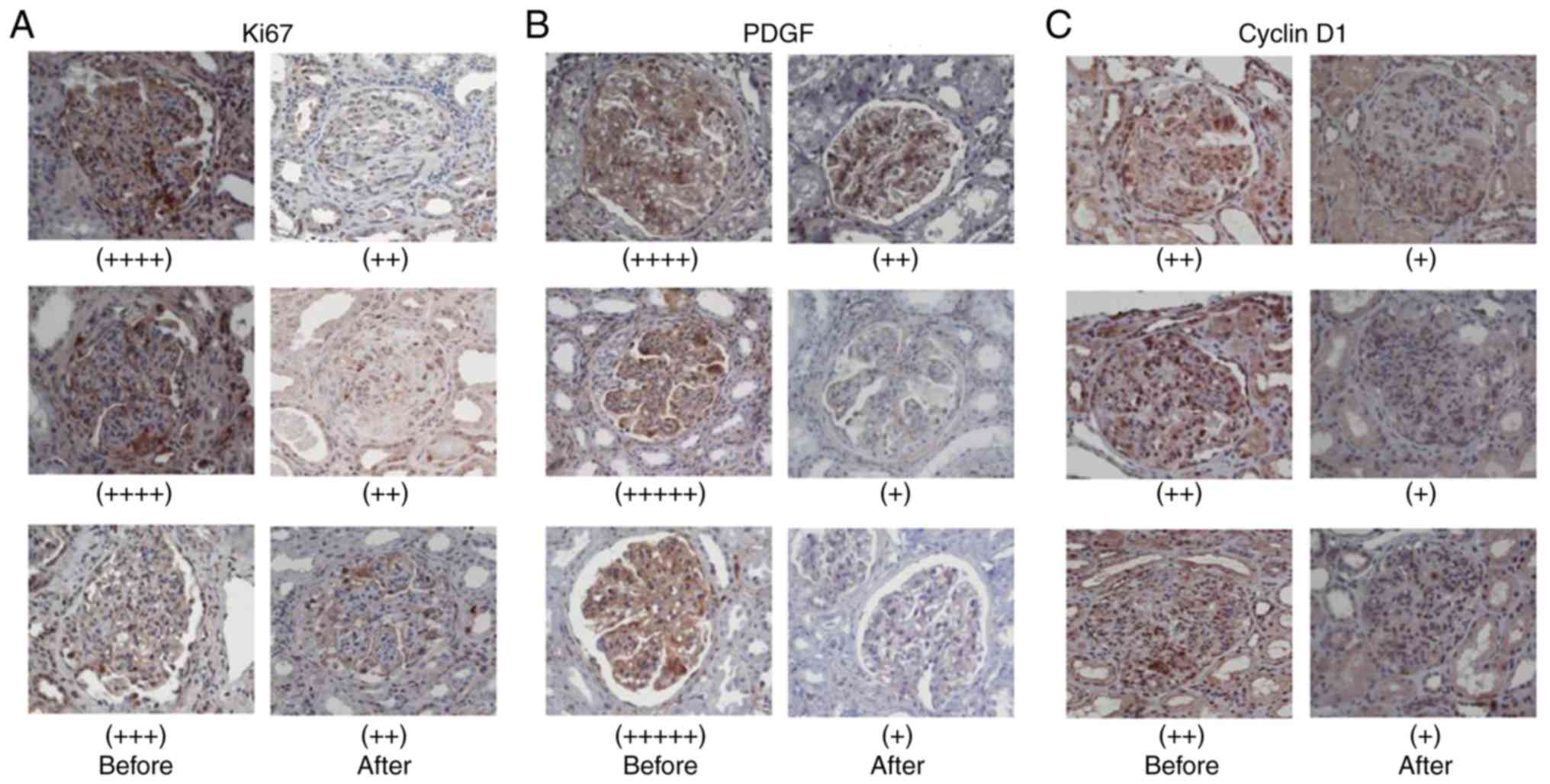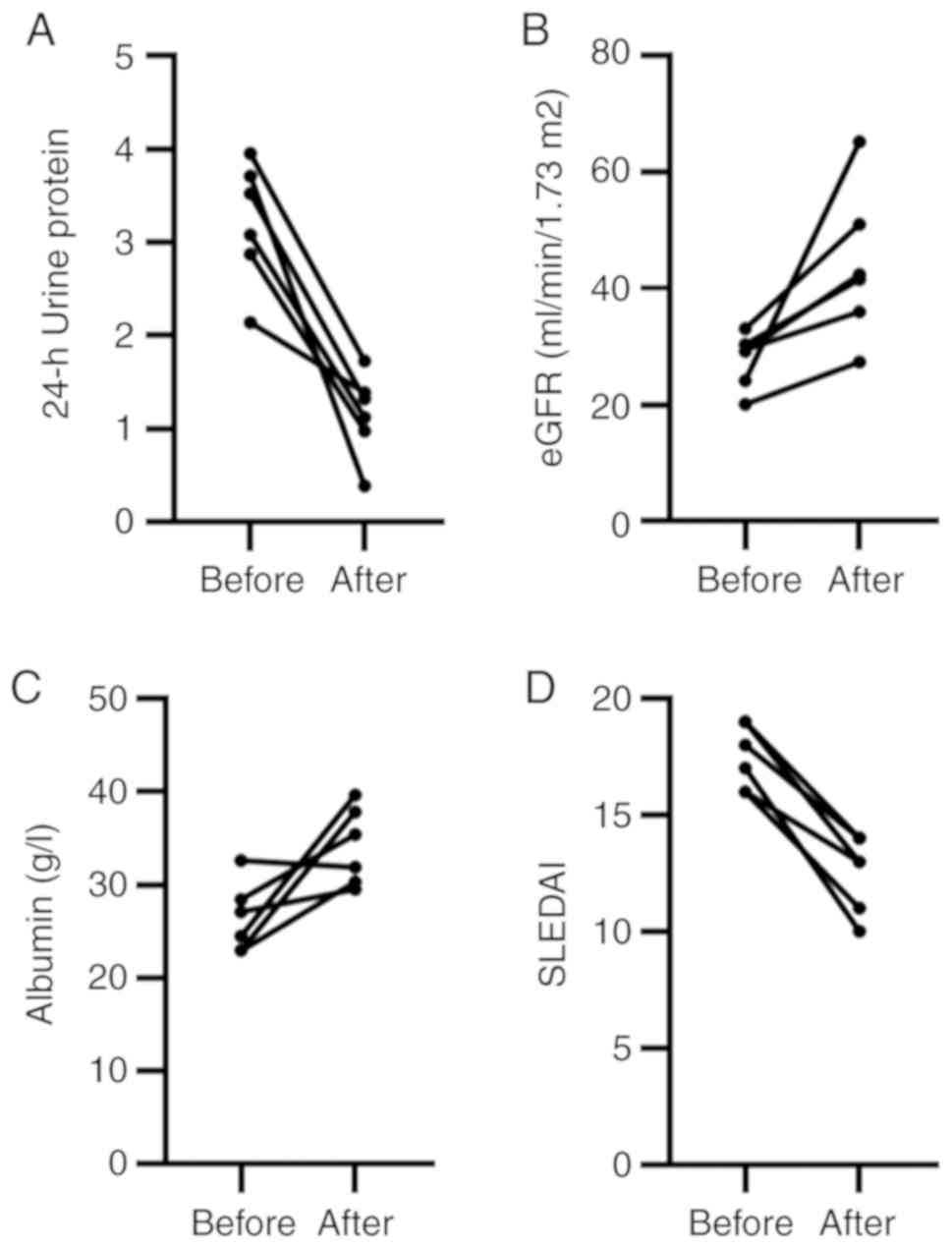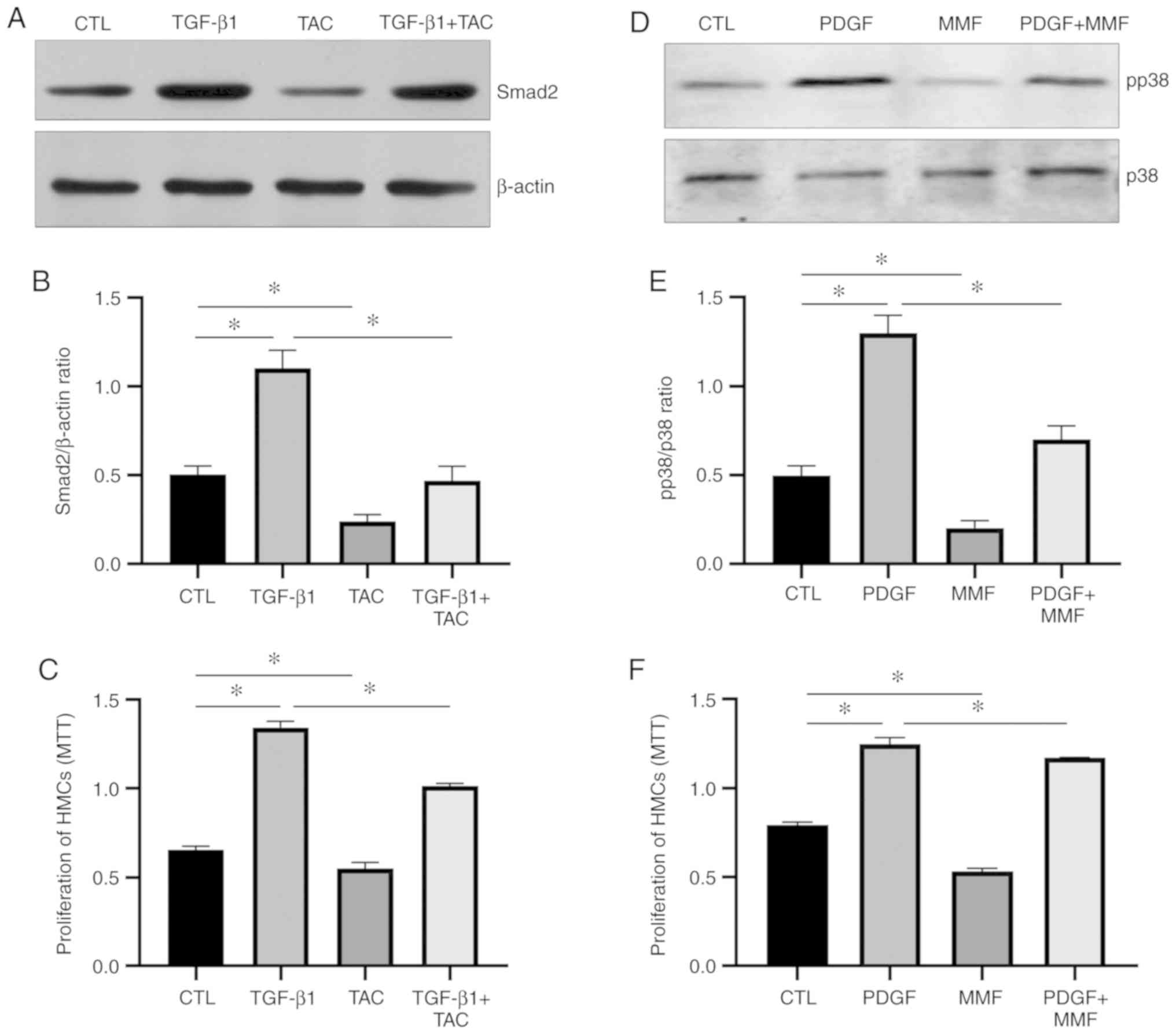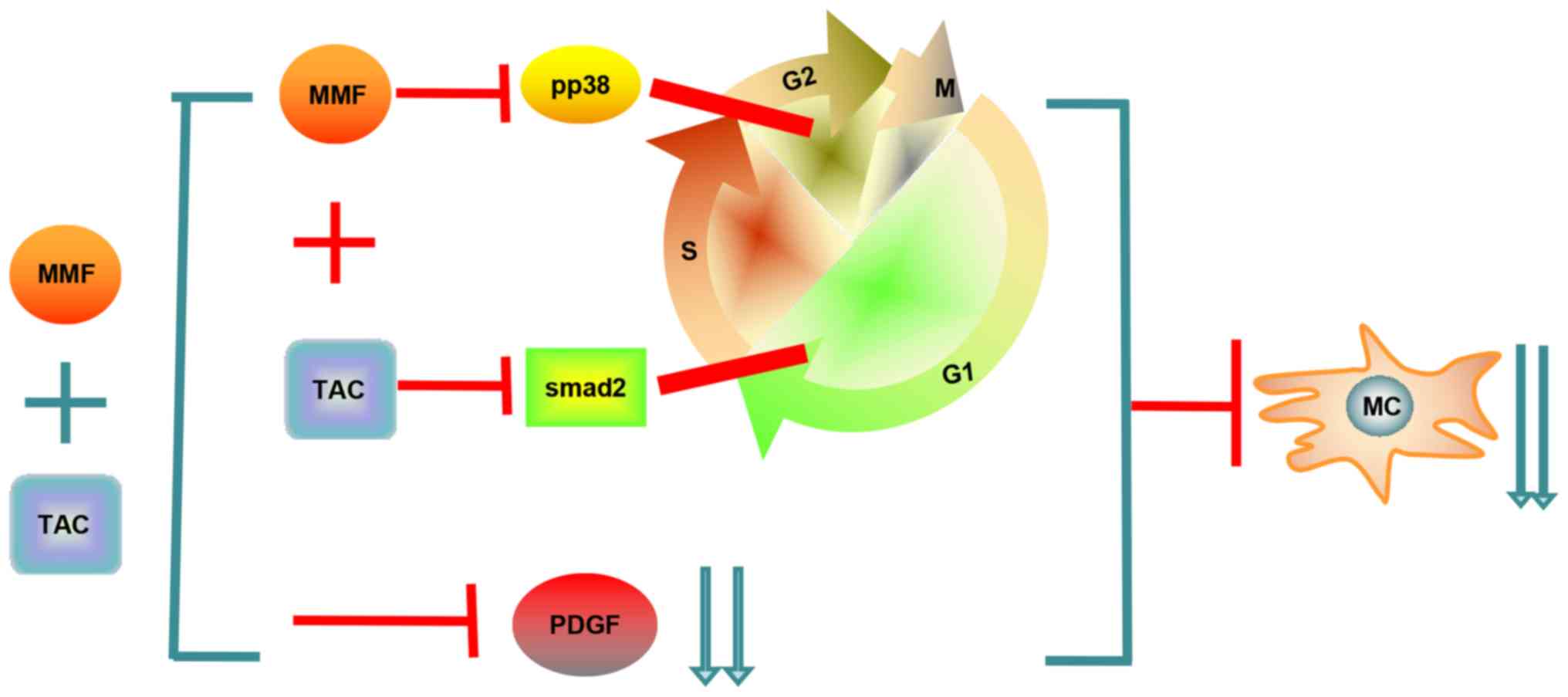|
1
|
Pastukhov O, Schwalm S, Römer I,
Zangemeister-Wittke U, Pfeilschifter J and Huwiler A: Ceramide
kinase contributes to proliferation but not to prostaglandin E2
formation in renal mesangial cells and fibroblasts. Cell Physiol
Biochem. 34:119–133. 2014. View Article : Google Scholar : PubMed/NCBI
|
|
2
|
Chhabra S, Liu Y, Hemmer MT, Costa L,
Pidala JA, Couriel DR, Alousi AM, Majhail NS, Stuart RK, Kim D, et
al: Comparative analysis of calcineurin inhibitor-based
methotrexate and mycophenolate mofetil-containing regimens for
prevention of graft-versus-host disease after reduced-intensity
conditioning allogeneic transplantation. Biol Blood Marrow
Transplant. 25:73–85. 2019. View Article : Google Scholar
|
|
3
|
Akool ES, Doller A, Babelova A, Tsalastra
W, Moreth K, Schaefer L, Pfeilschifter J and Eberhardt W: Molecular
mechanisms of TGFbeta receptor-triggered signaling cascades rapidly
induced by the calcineurin inhibitors cyclosporin A and FK506. J
Immunol. 181:2831–2845. 2008. View Article : Google Scholar
|
|
4
|
Huls G, Chitu DA, Havelange V,
Jongen-Lavrencic M, van de Loosdrecht AA, Biemond BJ, Sinnige H,
Hodossy B, Graux C, Kooy RVM, et al: Azacitidine maintenance after
intensive chemotherapy improves DFS in older AML patients. Blood.
133:1457–1464. 2019. View Article : Google Scholar : PubMed/NCBI
|
|
5
|
Chang KH, Sanchez-Aguilera A, Shen S,
Sengupta A, Madhu MN, Ficker AM, Dunn SK, Kuenzi AM, Arnett JL,
Santho RA, et al: Vav3 collaborates with p190-BCR-ABL in lymphoid
progenitor leukemogenesis, proliferation, and survival. Blood.
120:800–811. 2012. View Article : Google Scholar : PubMed/NCBI
|
|
6
|
Seo T, Fukushima T, Inoue H, Imamura S,
Urasaki Y, Yoshida A, Kawai Y, Yamauchi T, Iwasaki H, Tsutani H, et
al: Long-term follow-up of the clinical efficacy of chemotherapy
for acute myeloid leukemia at a single institute. J Infect
Chemother. 7:156–162. 2001. View Article : Google Scholar
|
|
7
|
Ekberg H, van Gelder T, Kaplan B and
Bernasconi C: Relationship of tacrolimus exposure and mycophenolate
mofetil dose with renal function after renal transplantation.
Transplantation. 92:82–87. 2011. View Article : Google Scholar : PubMed/NCBI
|
|
8
|
Liu Z, Zhang H, Liu Z, Xing C, Fu P, Ni Z,
Chen J, Lin H, Liu F, He Y, et al: Multitarget therapy for
induction treatment of lupus nephritis: A randomized trial. Ann
Intern Med. 162:18–26. 2015. View
Article : Google Scholar
|
|
9
|
Zhang H, Liu Z, Zhou M, Liu Z, Chen J,
Xing C, Lin H, Ni Z, Fu P, Liu F, et al: Multitarget therapy for
maintenance treatment of lupus nephritis. J Am Soc Nephrol.
28:3671–3678. 2017. View Article : Google Scholar : PubMed/NCBI
|
|
10
|
Bao H, Liu ZH, Xie HL, Hu WX, Zhang HT and
Li LS: Successful treatment of class V+IV lupus nephritis with
multitarget therapy. J Am Soc Nephrol. 19:2001–2010. 2008.
View Article : Google Scholar : PubMed/NCBI
|
|
11
|
Zhou X, Workeneh B, Hu Z and Li R: Effect
of immunosuppression on the human mesangial cell cycle. Mol Med
Rep. 11:910–916. 2015. View Article : Google Scholar
|
|
12
|
Delarue F, Virone A, Hagege J, Lacave R,
Peraldi MN, Adida C, Rondeau E, Feunteun J and Sraer JD: Stable
cell line of T-SV40 immortalized human glomerular visceral
epithelial cells. Kidney Int. 40:906–912. 1991. View Article : Google Scholar : PubMed/NCBI
|
|
13
|
Hochberg MC: Updating the American college
of rheumatology revised criteria for the classification of systemic
lupus erythematosus. Arthritis Rheum. 40:17251997. View Article : Google Scholar : PubMed/NCBI
|
|
14
|
Penault-Llorca F and Radosevic-Robin N:
Ki67 assessment in breast cancer: An update. Pathology. 49:166–171.
2017. View Article : Google Scholar : PubMed/NCBI
|
|
15
|
Casimiro MC, Velasco-Velázquez M,
Aguirre-Alvarado C and Pestell RG: Overview of cyclins D1 function
incancer and the CDK inhibitorlandscape past and present. Expert
Opin Investig Drugs. 23:295–304. 2014. View Article : Google Scholar : PubMed/NCBI
|
|
16
|
Mai S, Zou L, Tian X, Liao X, Luan Y, Han
X, Wei Y, Wu Y, Kuang S, Yang Y, et al: Double-edged effect of
hydroxychloroquine on human umbilical cord-derived mesenchymal stem
cells treating lupus nephritis in MRL/lpr Mice. Mol Pharm.
15:1800–1813. 2018. View Article : Google Scholar : PubMed/NCBI
|
|
17
|
Johnson RJ, Floege J, Yoshimura A, Iida H,
Couser WG and Alpers CE: The activated mesangial cell: A glomerular
'myofibroblast'? J Am Soc Nephrol. 2(10 Suppl): S190–S197.
1992.PubMed/NCBI
|
|
18
|
Alhassona F, Setha RK, Sarkara S, Kimonoa
DA, Albadrania MS, Dattaroya D, Chandrashekarana V, Scotta GI,
Raychoudhuryb S, Nagarkattic M, et al: High circulatory leptin
mediated NOX-2-peroxynitrite-miR21 axis activate mesangial cells
and promotes renal inflammatory pathology in nonalcoholic fatty
liver disease. Redox Biol. 17:1–15. 2018. View Article : Google Scholar
|
|
19
|
Pereira RL, Felizardo RJ, Cenedeze MA,
Hiyane MI, Bassi EJ, Amano MT, Origassa CS, Silva RC, Aguiar CF,
Carneiro SM, et al: Balance between the two kinin receptors in the
progression of experimental focal and segmental glomerulosclerosis
in mice. Dis Model Mech. 7:701–710. 2014. View Article : Google Scholar : PubMed/NCBI
|
|
20
|
Scindia YM, Deshmukh US and Bagavant H:
Mesangial pathology in glomerular disease: Targets for therapeutic
inter-vention. Adv Drug Deliv Rev. 62:1337–1343. 2010. View Article : Google Scholar : PubMed/NCBI
|
|
21
|
Deng J, Luo L, Zhu L and Xie H and Xie H:
Multitarget therapy versus intravenous cyclophosphamide in the
induction treatment oflupus nephritis: A metaanalysis of randomized
controlled trials. Turk J Med Sci. 48:901–910. 2018. View Article : Google Scholar : PubMed/NCBI
|
|
22
|
Zhou T, Lin S, Yang S and Lin W: Efficacy
and safety of tacrolimus in induction therapy of patients with
lupus nephritis. Drug Des Devel Ther. 13:857–869. 2019. View Article : Google Scholar : PubMed/NCBI
|
|
23
|
Park DJ, Kang JH, Lee KE, Bae SC, Chung
WT, Choe JY, Jung SY, Kim YS, Lee HS, Lee J, et al: Efficacy and
safety of mycophenolate mofetil and tacrolimus combination therapy
in patients with lupus nephritis a nationwide multicentre study.
Clin Exp Rheumatol. 37:89–96. 2019.
|
|
24
|
Mok CC, To CH, Yu KL and Ho LY: Combined
low-dose mycophenolate mofetil and tacrolimus for lupus nephritis
with suboptimal response to standard therapy: A 12-month
prospective study. Lupus. 22:1135–1141. 2013. View Article : Google Scholar : PubMed/NCBI
|
|
25
|
Choi CB, Won S and Bae SC: Outcomes of
multitarget therapy using mycophenolate mofetiland tacrolimus for
refractory or relapsing lupus nephritis. Lupus. 27:1007–1011. 2018.
View Article : Google Scholar : PubMed/NCBI
|
|
26
|
Prytuła A and van Gelder T: Clinical
aspects of tacrolimus use in paediatric renal transplant
recipients. Pediatr Nephrol. 34:31–43. 2019. View Article : Google Scholar
|
|
27
|
Dubus I, Vendrely B, Christophe I,
Labouyrie JP, Delmas Y, Bonnet J and Combe C: Mycophenolic acid
antagonizes the activation of cultured human mesangial cells.
Kidney Int. 62:857–867. 2002. View Article : Google Scholar : PubMed/NCBI
|
|
28
|
Wiseman AC: Immunosuppressive medications.
Clin J Am Soc Nephrol. 11:332–343. 2016. View Article : Google Scholar :
|
|
29
|
Fu J, Wang Z, Lee K, Wei C, Liu Z, Zhang
M, Zhou1 M, Cai M, Zhang W, Chuang PY, et al: Transcriptomic
analysis uncovers novel synergistic mechanisms in combination
therapy for lupus nephritis. Kidney Int. 93:416–429. 2018.
View Article : Google Scholar
|
|
30
|
Manabe S, Nitta K and Nagata M: Direct
effects of immunomodulatory agents on podocytes in immune-mediated
glomerular diseases. Contrib Nephrol. 195:131–142. 2018. View Article : Google Scholar : PubMed/NCBI
|
|
31
|
Shultz PJ, DiCorleto PE, Silver BJ and
Abboud HE: Mesangial cells express PDGF mRNAs and proliferate in
response to PDGF. Am J Physiol. 255(4 Pt 2): F674–F684.
1988.PubMed/NCBI
|
|
32
|
Sabuda-Widemann D, Grabensee B, Schwandt C
and Blume C: Mycophenolic acid inhibits the autocrine PDGF-B
synthesis and PDGF-BB-induced mRNA expression of Egr-1 in rat
mesangial cells. Nephrol Dial Transplant. 24:52–61. 2009.
View Article : Google Scholar
|
|
33
|
Liu HF, Liu H, Lv LL, Ma KL, Wen Y, Chen L
and Liu BC: CCN3 suppresses TGF-b1-induced extracellular matrix
accumulation in human mesangial cells in vitro. Acta Pharmacol Sin.
39:222–229. 2018. View Article : Google Scholar
|
|
34
|
Yoon J, Lee YJ, Namgung S, Han BH, Choi
ES, Kang DG and Lee HS: Samchuleum attenuates diabetic renal injury
through the regulation of TGF-β/Smad signaling in human renal
mesangial cells. Mol Med Rep. 17:3099–3108. 2018.
|
|
35
|
Zhang L, Han C, Ye F, He Y, Jin Y, Wang T,
Wu Y, Jiang Y, Zhang F and Jin X: Plasma gelsolin induced
glomerular fibrosis via the TGF-β1/Smads signal transduction
pathway in IgA nephropathy. Int J Mol Sci. 18:3902017. View Article : Google Scholar
|
|
36
|
Han J, Lee JD, Bibbs L and Ulevitch RJ: A
MAP kinase targeted by endotoxin and hyperosmolarity in mammalian
cells. Science. 265:808–811. 1994. View Article : Google Scholar : PubMed/NCBI
|
|
37
|
Li X, Wang L and Ma H: Betaine alleviates
high glucose-induced mesangial cell proliferation by inhibiting
cell proliferation and extracellular matrix deposition via the
AKT/ERK1/2/p38 MAPK pathway. Mol Med Rep. 20:1754–1760.
2019.PubMed/NCBI
|
|
38
|
Kim D, Li HY, Lee JH, Oh YS and Jun HS:
Lysophosphatidic acid increases mesangial cell proliferation in
models of diabetic nephropathy via Rac1/MAPK/KLF5 signaling. Exp
Mol Med. 51:1–10. 2019.PubMed/NCBI
|















